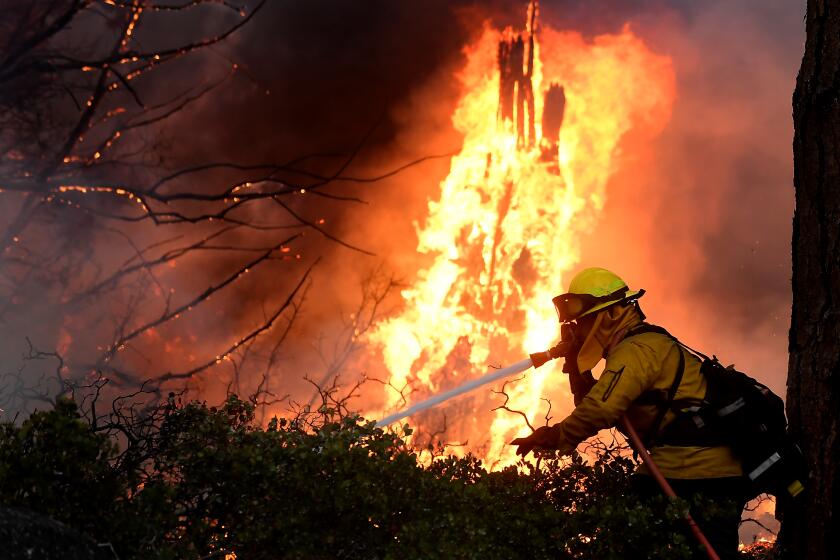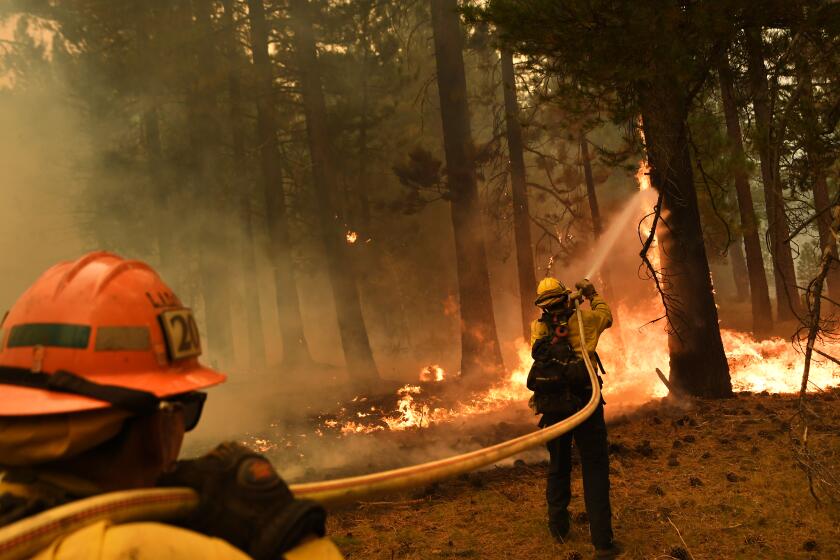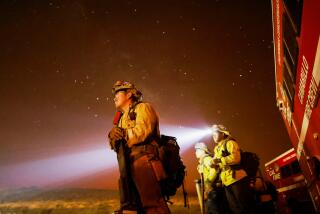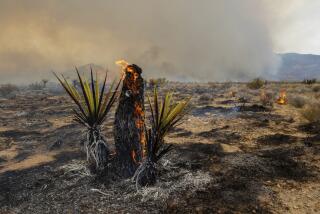‘Cautious optimism’ as crews turn a corner on Caldor fire
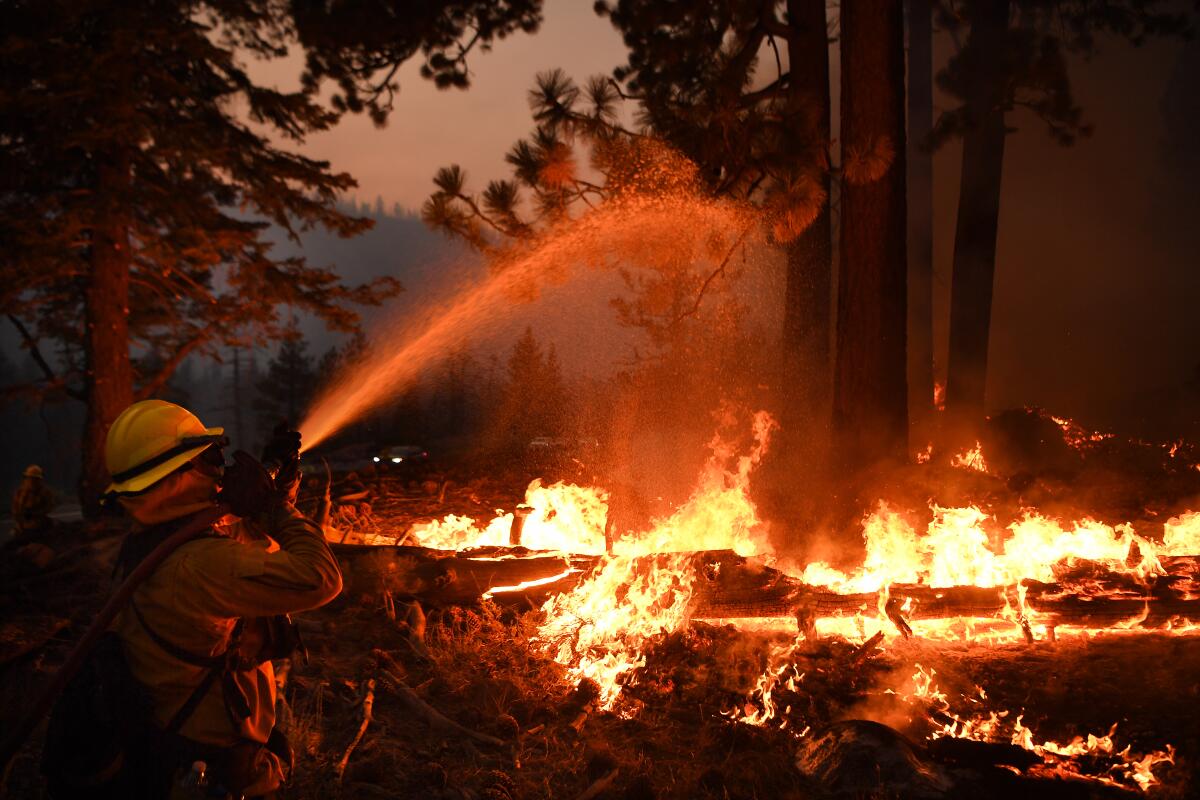
SOUTH LAKE TAHOE, Calif. — Twenty days into the fight against the Caldor fire, crews on Friday were feeling “cautiously optimistic” as they turned a corner on the blaze burning near South Lake Tahoe, officials said.
After significant gains earlier in the week, the fire grew less than 3,000 acres overnight to 212,907 acres. It was 29% contained.
“That’s the fourth straight day of decline in rate of growth, and even more significantly, the last time it grew that small of an amount was 14 days ago,” said Dean Gould, agency supervisor for the Eldorado National Forest. “Things are clearly heading in the right direction for us.”
Thousands rushed to leave South Lake Tahoe as the resort city came under an evacuation order due to the Caldor fire.
The fire’s east zone will remain firefighters’ biggest priority heading into the weekend, with flames continuing to creep toward Wrights Lake and the Desolation Wilderness. But crews were able to make a direct attack on the head of the fire, near South Lake Tahoe and the California-Nevada state line, to prevent it from entering the popular resort town.
“That’s the result of a lot of hard work that you’ve put in now in over two weeks of being here,” Tim Ernst, operations section chief with the California Department of Forestry and Fire Protection, told firefighters Friday.
Crews are also focused on tying some “loose ends” around Kirkwood and Christmas Valley, Ernst said.
“We’re not out of the woods, but we also have not seen any growth there as well,” he added.
The Caldor fire has destroyed more than 600 homes and threatens more than 32,000 structures as it moves toward the Nevada state line.
Much of the fire’s west zone — near its ignition point south of Grizzly Flats — was in “mop-up mode,” officials said, meaning defensive lines were holding and crews were working to cool down the terrain.
Some evacuated neighborhoods on that side of the fire began repopulation.
“I’m grateful as hell to be home,” Pollock Pines resident Brad Hutchinson, 65, said Thursday.
In the parking lot of a Safeway, Hutchinson walked slowly with a cane toward his Honda Accord. He broke his hip years ago and never quite recovered.
He was evacuated two weeks ago and said it cost him $3,000 to stay at a Best Western in Roseville. He said he was dependent on food donations from a local Walmart and churches and noted with gratitude that “there was a lot of help out there.”
But now that he was home, he thought about what comes next: paying the credit card bill, taking care of his two grandsons and stepson, as well as his wife, who was just in the hospital. He hasn’t worked in 12 years because he’s disabled, he said.
“It’s hard and I cry a lot,” he said. Wiping his tears, he closed the door and turned on his car.
“The fire didn’t make it worse,” he said. “But I’m grateful to be home.”
But officials on Friday morning advised crews not to grow complacent.
“We’ve got this thing kind of lassoed, and we just need to keep holding on to it with what we’ve got,” fire behavior analyst Steven Volman said. “Know that there’s still a lot of hot material out there. Know that there’s a lot of unburned islands in the middle of this thing that could still threaten our line.”
In Christmas Valley, charred trees and rocks perched behind two-story homes showed just how close the flames had come to buildings.
Incident meteorologist Jim Dudley said that even though the strong winds that fueled the fire earlier in the week had dissipated, the recurrent daily winds typical in the area could still fan flames.
“Just because we don’t have red flag wind conditions across the fire, the wind threat is still there, and it’s all localized,” he said.
President Biden, Gov. Gavin Newsom and Nevada Gov. Steve Sisolak all declared states of emergency on the fire this week, and more than 4,000 personnel were assisting with firefighting efforts. Officials said 497,000 gallons of water were dropped onto the blaze Thursday.
There are several other indicators of success, Gould said Friday morning: The number of residents in temporary evacuation shelters has decreased by 250, and the number of residents under evacuation warnings or orders went down by 5,500.
The number of properties threatened by the fire also decreased to about 32,000 from about 35,000 earlier this week.
The Caldor fire has skirted a high granite ridge protecting South Lake Tahoe and is threatening thousands of homes in heavily forested neighborhoods.
Near Pollock Pines Thursday, David Duncan said his home sits in an area that still remains under evacuation orders. He sat in his Ram 1500 pickup truck with his German shepherd, Kona, and his Black Mouth Cur, Jasper, hoping he could return after being forced to evacuate 16 days ago.
There was little smoke in the blue sky, and Duncan said much of what has burned was four to five miles from his home. He said he didn’t understand why he couldn’t be let back in, noting that if the power were out he had a generator he could use.
In the meantime, he waited in his truck, hoping any moment the evacuation order would be lifted.
He gave a quick glance back at Kona and noted that if he couldn’t get home Thursday he’d go to Placerville and stay at his ex-wife’s house, where he could sleep and let the dogs out in the backyard.
“I just want to sleep in my own bed,” he said.
More to Read
Sign up for Essential California
The most important California stories and recommendations in your inbox every morning.
You may occasionally receive promotional content from the Los Angeles Times.

